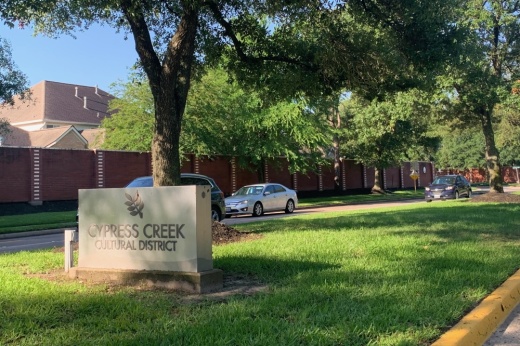A Spring-area community task force hopes to fight flooding in the Cypress Creek watershed by creating a new drainage district for the area.
The Cypress Creek Flooding Task Force has been working with local elected officials—including Precinct 3 Commissioner Tom Ramsey and State Rep. Sam Harless, R-Spring—to discuss the creation of a Cypress Creek Drainage District. Task Force President Glenn Wilkerson said June 2 he hopes the district will be submitted as legislation for discussion in the upcoming 88th Texas Legislature, which will begin on Jan.10, 2023, according to the Legislative Reference Library of Texas’ website.
If passed by the Legislature, Wilkerson said the new drainage district would still need to be approved by voters before being created, as it will levy a tax on property owners within the district's boundaries. Task force leaders hope the drainage district will be on the ballot in November 2023.
Should the drainage district be created, taxes collected by the entity could be used to fund 22 stormwater detention sites along the Cypress Creek watershed, according to a May 31 news release.
“This could have a tremendous impact on [the] quality of life in our community,” Wilkerson said.
Wilkerson estimated the tax rate would be about $0.10 per $100 valuation, although it is too soon to say for sure, he said.
The new drainage district would span from Hwy. 290 in Cypress to the Hardy Toll Road in Spring, covering most of the Cypress Creek floodplain, Task Force Project Chair Calvin Cobb said.
“This is the area mainly affected by Hurricane Harvey, the Tax Day Flood and the Memorial Day Flood,” reads the May 31 news release. “The Task Force will be concentrating on the communities in this area to garner advocates for the plan.”
The district would also cover the Cypress Creek Cultural District—which features community amenities, such as the Barbara Bush Branch Library, The Centrum, the Pearl Fincher Museum of Fine Arts and the future George H.W. Bush Community Center, which is under construction.
Currently, a 100-year flooding event could cause $17.9 billion worth of damage to 16,000 structures located in the Cypress Creek Cultural District, according to the Task Force’s estimates. Creating the drainage district could prevent potentially devastating flooding, Cobb said.
Task force officials are now hoping to present their plan for a drainage district at a community meeting in late August.
“It’s important to get started,” Cobb said.
Previously, the Cypress Creek Flooding Task Force was focused on gaining support from local municipal utility districts to help fund the construction of two stormwater detention basins in the Cypress Creek floodplain. However, in recent months, they decided to switch their focus to the creation of a drainage district thanks to a suggestion from local lawyer Andy Johnson, Cobb said. As the Cypress Creek watershed is largely unincorporated, Cobb said the creation of a drainage district would give the flood-prone community a voice in advocating for flood control.
“The district would allow us to take control of our own destiny without waiting for the county,” Wilkerson said.
Before tackling the local flooding issue, the Cypress Creek Flooding Task Force consulted the Cypress Creek Program Implementation Plan, which was released in January, while working on their flood fighting efforts, Wilkerson said. As previously reported by Community Impact Newspaper, the report was completed by engineering firm Jones & Carter, which was awarded the project for $1.4 million by Harris County Commissioners Court in July 2020.
Other members of the Cypress Creek Flooding Task Force include Bobby Lieb, president of the Houston Northwest Chamber of Commerce; Jim Robertson, chair of the Cypress Creek Greenway Project; Shah Ardalan, president of Lone Star College-University Park; Barbara Schlattman, chair of the Green Medians Project; and Clara Maynard, head librarian of the Barbara Bush Branch Library.
Hannah Zedaker and Danica Lloyd contributed to this report.





